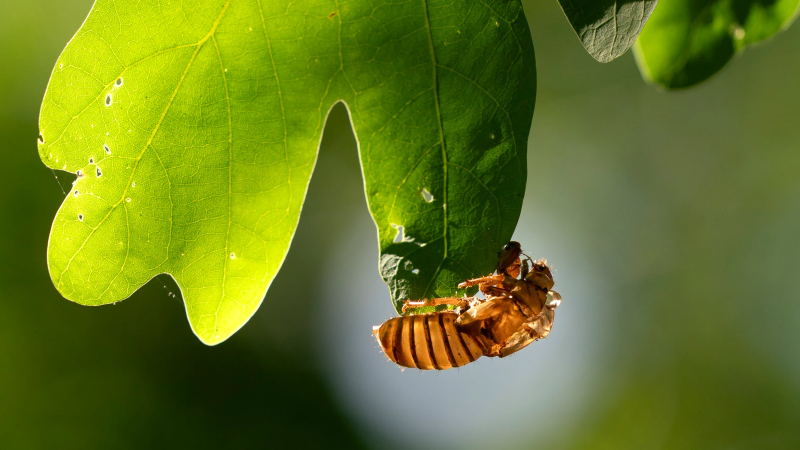Feeling itchy? Tiny mites may bite humans more after cicada emergence
The estimated trillions of periodical brood cicadas that emerged in multiple U.S. states this year may be gone for the foreseeable future, but some people are feeling the painful, itchy remnants of a bug that took advantage of the rarely-occurring food source: Oak leaf itch mites.
These mites, also known as Pyemotes herfsi, have been previously confirmed to attack and feed on periodical cicada egg nests and can also cause an outbreak of bite rashes on humans, according to the University of Maryland Extension.
These mites were thought to have originated in Europe, and the first recognition of the mites in the U.S. was in Kansas in 2004. The mites can be carried by the wind for large distances, and thanks to that, they have since been reported in a number of other states, from Illinois to Texas and more.
Here's what to know about oak leaf itch mites.
West Nile in the US:Mosquito season takes hold as seventh person dies of virus
What are oak leaf itch mites?
Measuring around 0.2 millimeters long, oak leaf itch mites are nearly invisible to to the naked eye, according to Penn State Extension. The insects are reddish-tan in color and are elongated, with a shiny exoskeleton.
The species commonly feeds on the larvae of a midge, or a fly, that forms galls on the edges of pin oak leaves, according to the University of Maryland Extension. Once their development is complete, they drop from the tree, and can land on (and bite) humans and animals.
What is an oak leaf itch mite's bite like?
The bite from an oak leaf itch mite can cause an itchy rash and redness of the skin with small, raised, pimple-like bumps, Penn State Extension says. Although they normally feed on insects, they can inadvertently bite humans while searching for other food sources.
Most of these bites happen from late summer into the fall, when the mite's populations are very large. Many of the bites to humans can happen when people are gardening, especially when raking infested pin oak leaves in the fall, according to Penn State Extension.
How to treat oak leaf itch mite bites
If you have been bitten, the University of Maryland Extension recommends not to scratch, which can lead to a secondary bacterial infection. You can use products that are labeled to provide relief from itching and other symptoms, and to consult a doctor if the symptoms are bad, or if an infection appears.
To prevent possible bites, the extension recommends to bathe after spending time in areas where you may have been exposed, and to wear protective clothing when in an area of potential exposure, like long sleeves, gloves and a hat.
Why do oak leaf itch mites bite people after periodical cicadas emerged?
The first oak leaf itch mite-related rashes on humans after a periodical cicada brood emergence was in 2007 in the Chicago area, the last time Brood XIII emerged, according an Illinois Department of Public Health report from the time.
The University of Maryland Extension says that the abundance of periodical cicadas emerging in their brood years may lead to an increase of the mite's population, and a rise of mite bites to humans.

When did Broods XIX, XIII emerge this year?
The 17-year Brood XIII emerged in multiple Midwestern states this year, and the 13-year Brood XIX emerged mainly in the Southeast. The broods were part of a rare, double-brood emergence of trillions of cicadas in a combined 17 states around the U.S.
They emerged once the soil eight inches underground reaches 64 degrees, which began in many states in April and May and lasted through late June.
The two broods, Brood XIX and Brood XIII, had not emerged together in 221 years, and are not expected to do so again until 2245.
Disclaimer: The copyright of this article belongs to the original author. Reposting this article is solely for the purpose of information dissemination and does not constitute any investment advice. If there is any infringement, please contact us immediately. We will make corrections or deletions as necessary. Thank you.






